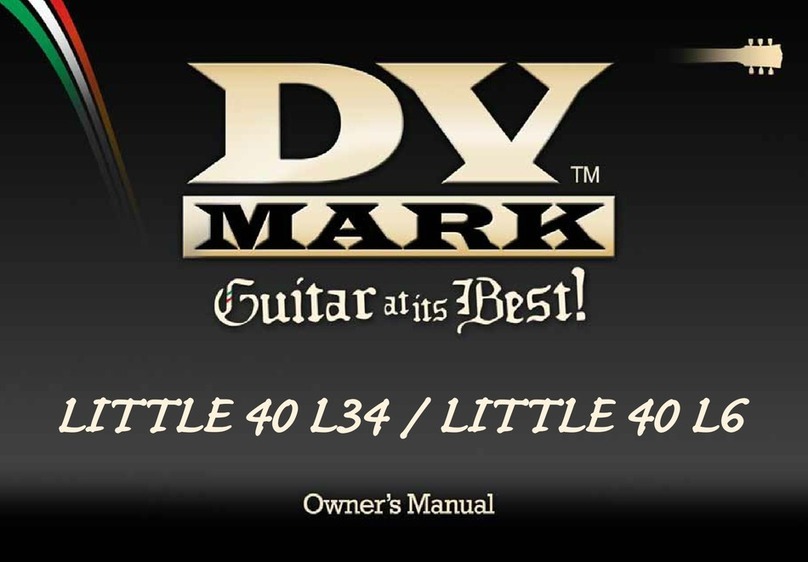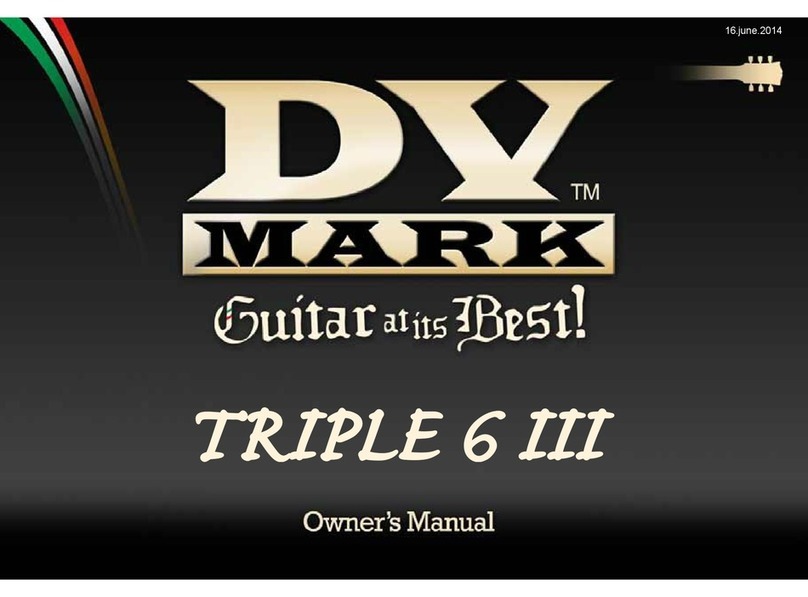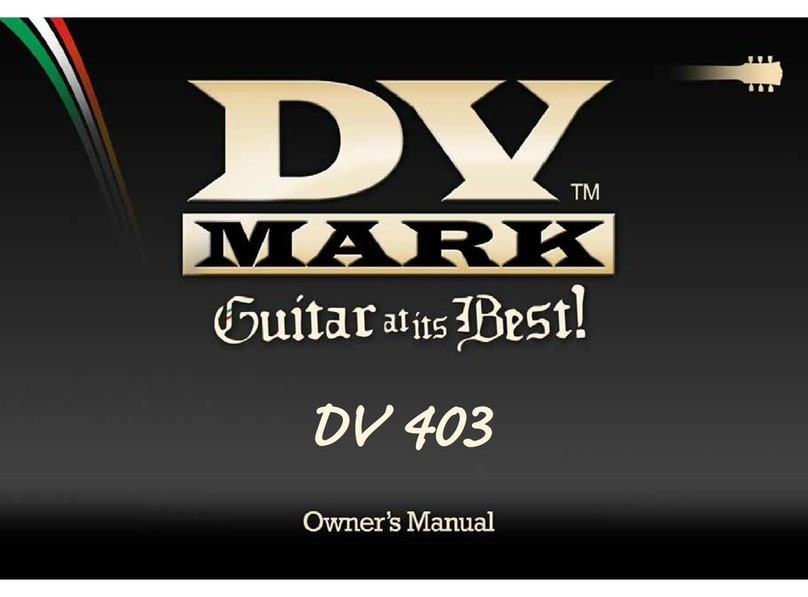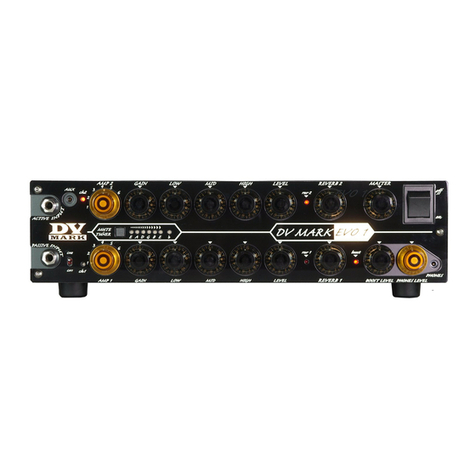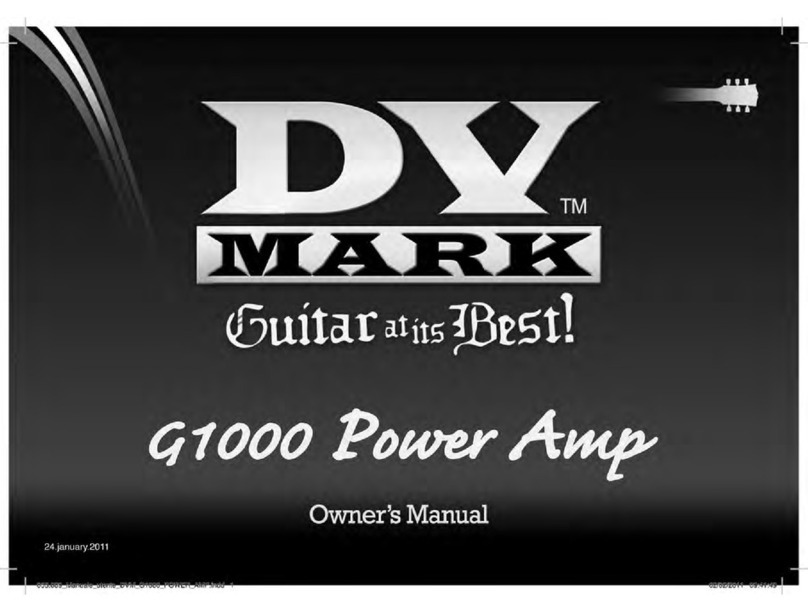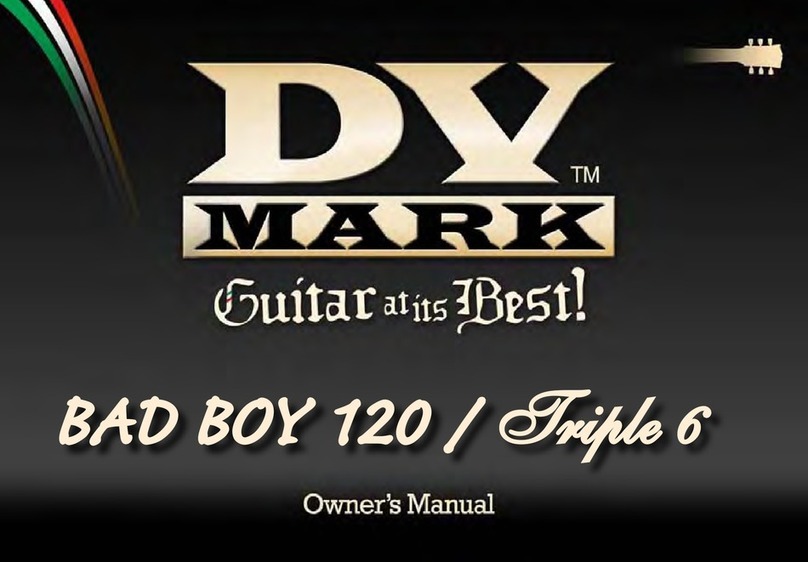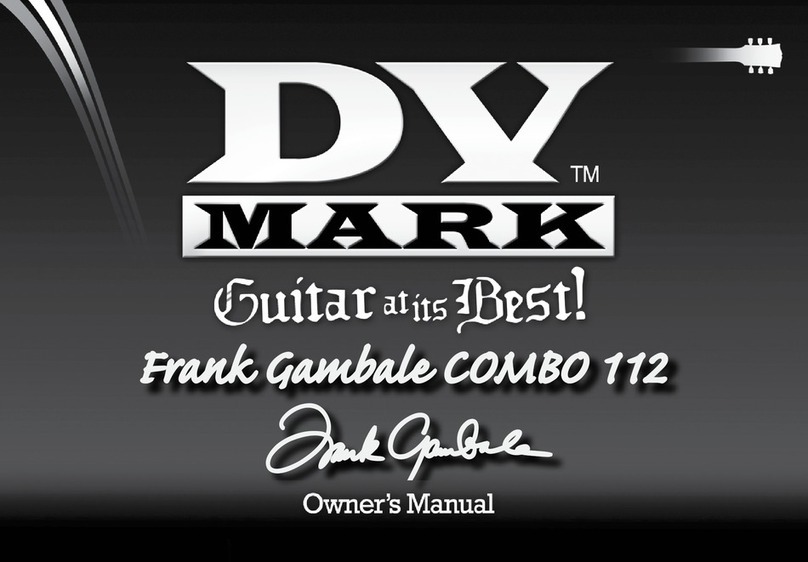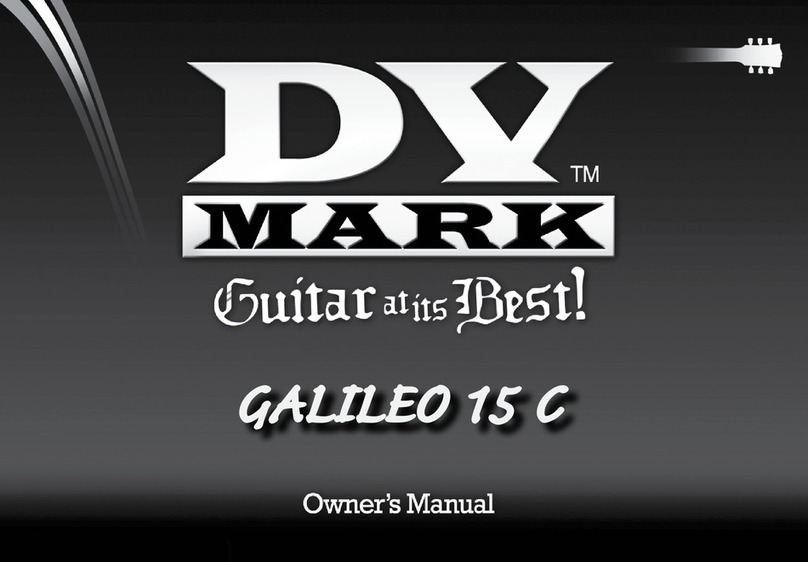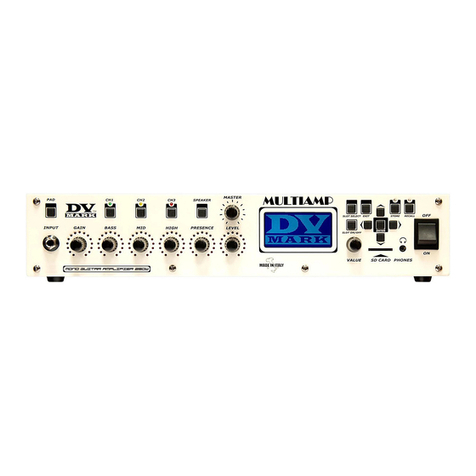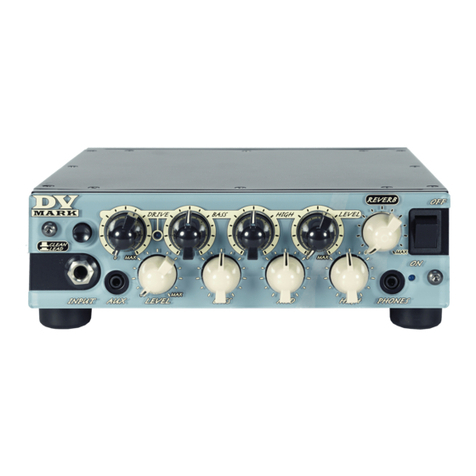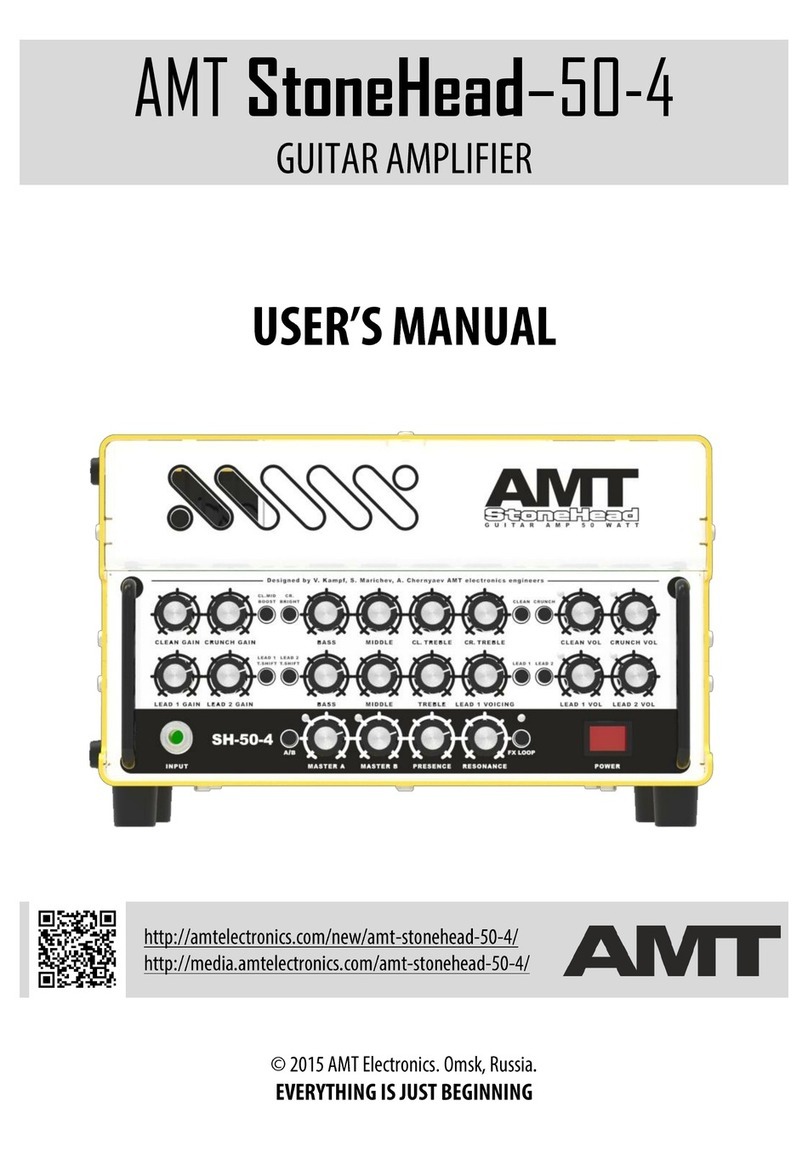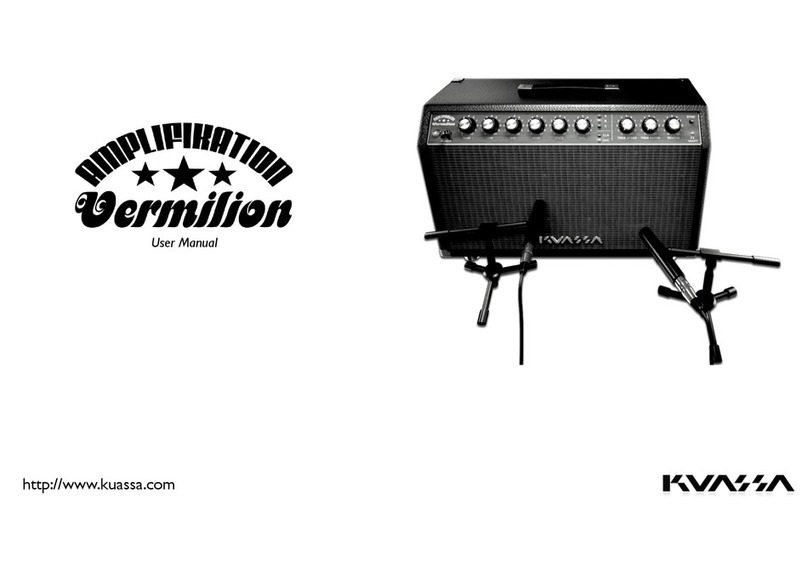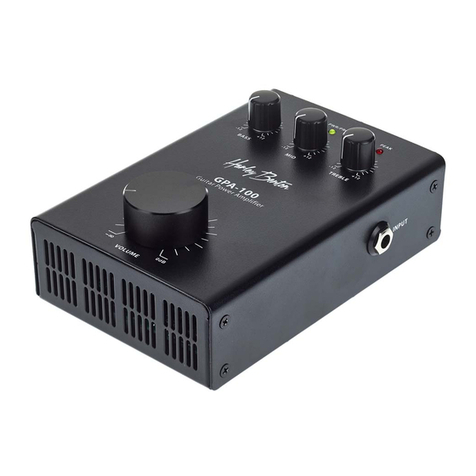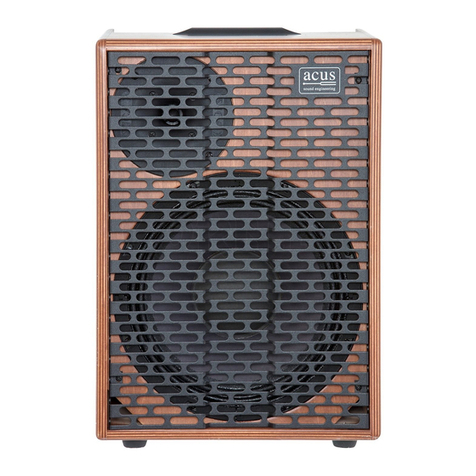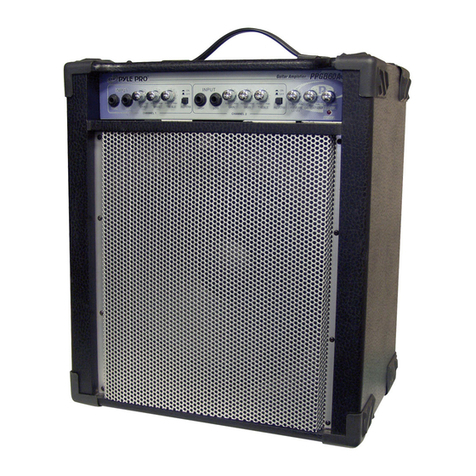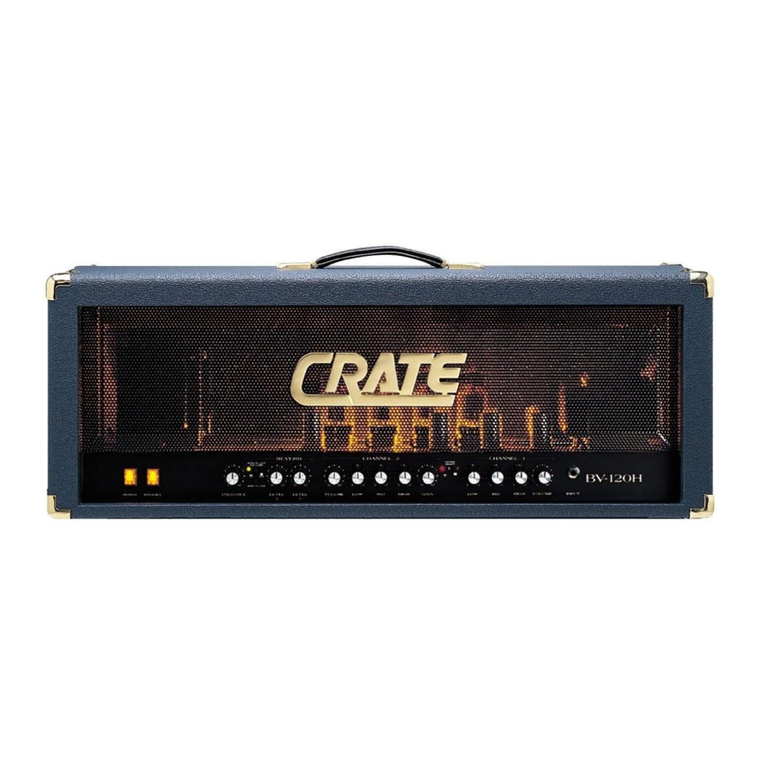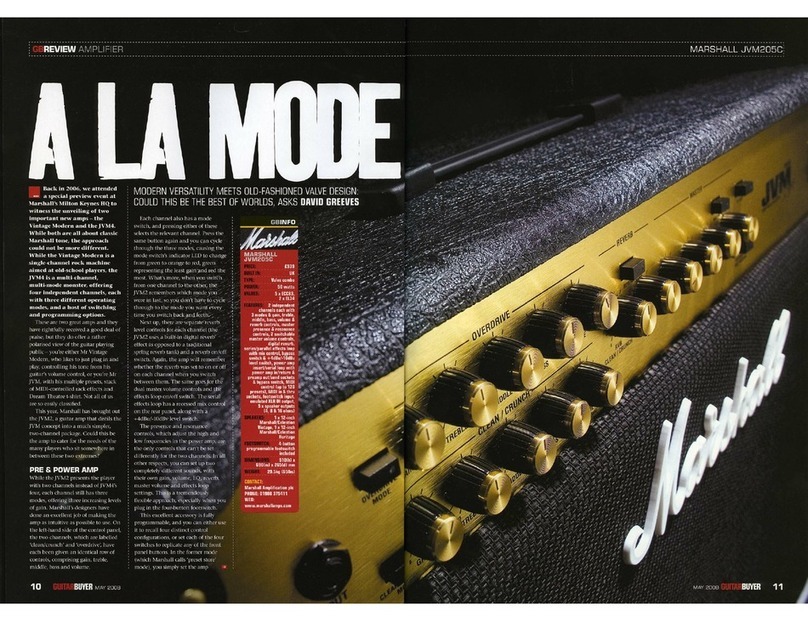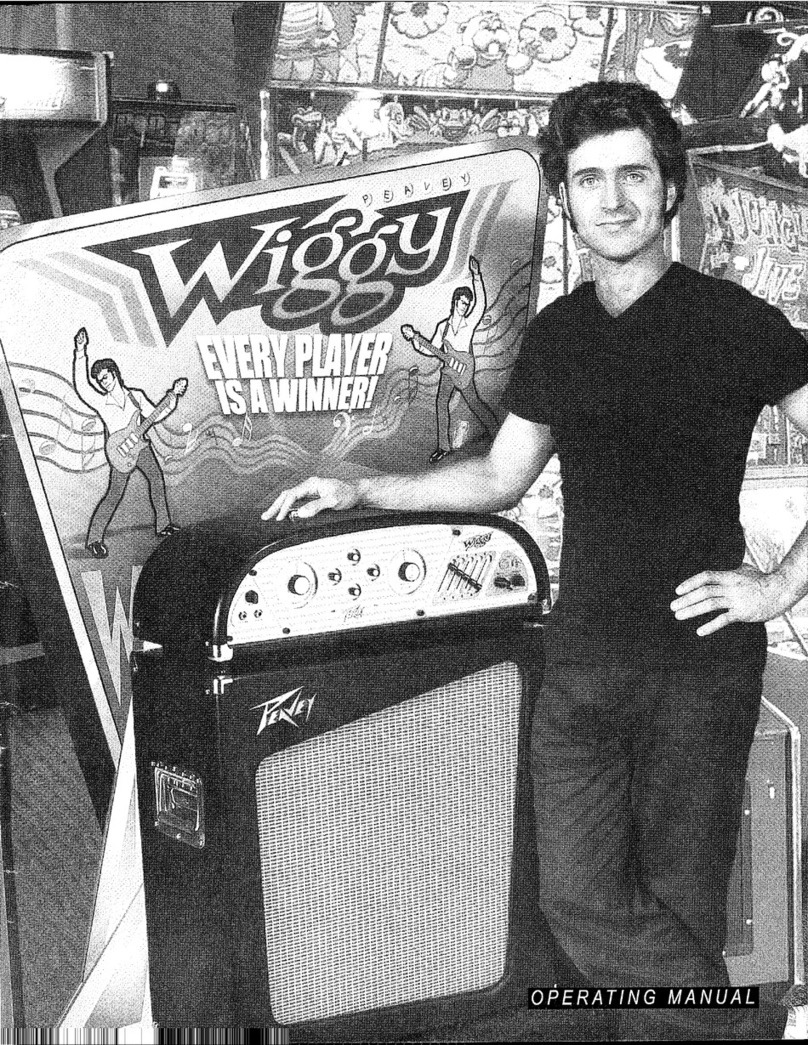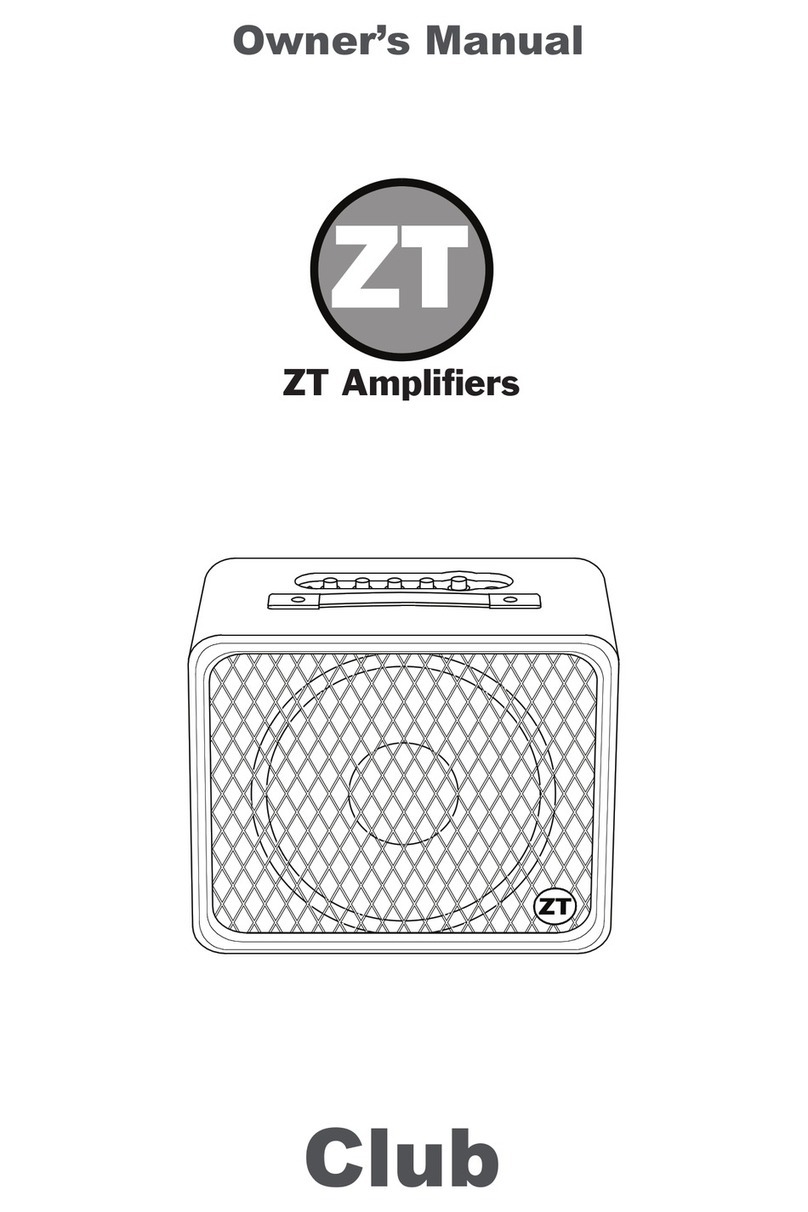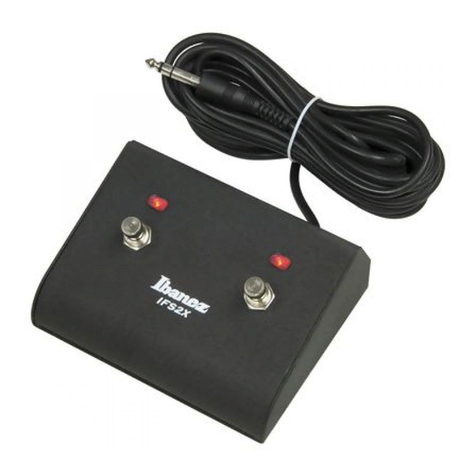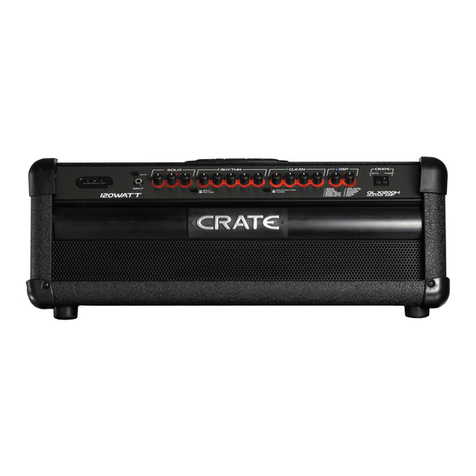FRONT PANEL
4
1) INPUT Connect your guitar to this input using a standard ¼” shielded instrument cable.
2) GAIN (CH1) This knob sets the gain level, and it is the preamp’s most powerful control. It not only determines the amount of drive or satu-
ration (for getting clean, crunch or overdriven sounds, or anywhere in between), but also plays an important role in tone shaping.
3) BASS This knob controls the amount of low frequencies in your sound.
4) MIDDLE The Middle control regulates the midrange frequencies and it is an important part of your tone shaping.
5) HIGH The High knob controls the amount of high frequencies in your sound.
6) MASTER (CH1) This control is the master feed from the end of the preamp channel 1 to the tube power stage. It allows you to obtain a
wide range of sounds/colours in relation to the gain setting—for example, very low gain sounds at high volumes or high gain sounds at low
volumes.
7) SWITCH CH1/CH2 This channel selector switches between the Clean and Drive channels. Channel-switching can also be controlled by a
DUAL footswitch that can be plugged into the amp’s rear panel (20).
In this amp we have included a convenient onboard overdrive-pedal circuit on channel 2, featuring more controls than a simple pedal, with a
complete and effective EQ, gain and master control.
8) GAIN (CH2))Adjusts the amount of distortion on CH2, ranging from crunch to overdrive sounds.
9) BASS This knob controls the amount of low frequencies in your sound. When you’re starting to explore sounds on the amp, avoid boosting
the lows too much as this can reduce your attack and muddy your sound—especially as you turn up your gain.
10) MIDDLE The Middle control regulates the midrange frequencies and it is an important part of your tone shaping. The frequency range it
boosts and cuts has a big effect on the character of your sound. For a more scoopy tone, lower the mids. Turn the knob up for more focused
attack and better pitch definition.
11) HIGH The High knob controls how much of the preamp’s high frequencies are blended into the signal. It can produce unwanted noise
(hiss) or pickup feedback if really cranked, so it’s best to avoid extreme settings.
12) MASTER (CH2) This control is the master feed from the end of channel 2 to the tube power stage. It allows to match the distortion channel
level to the clean channel volume when switching between CH1 and CH2.


